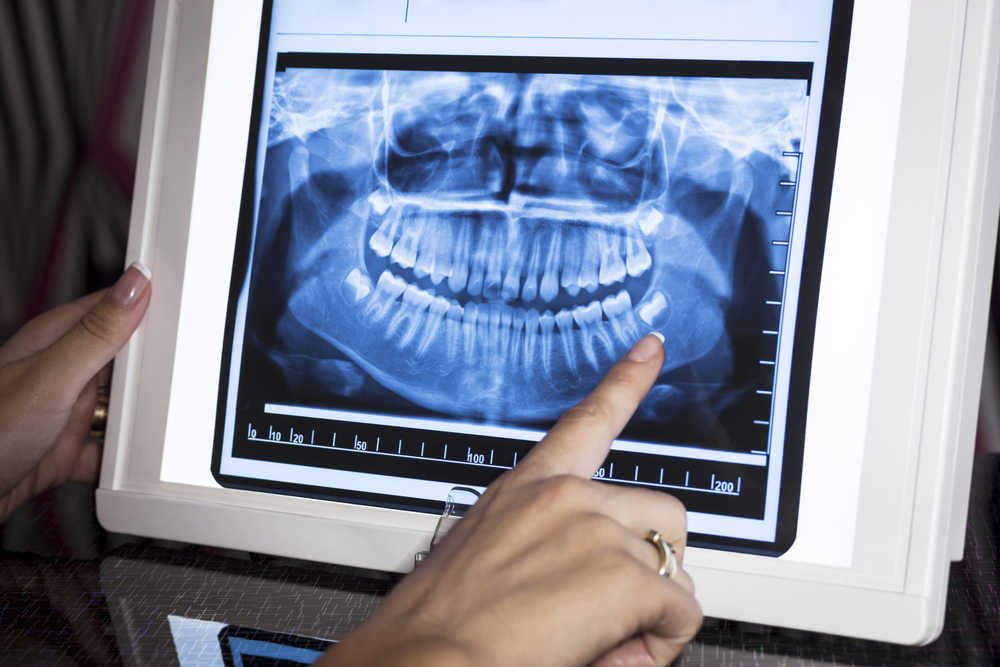Dentists want to provide the best possible dental care to their patients, but a visual examination doesn’t tell them everything they need to know. Thanks to dental X-rays, dentists can accurately diagnose and treat dental problems early before they become more serious. And if after examining your mouth and reviewing these images, your dentist finds no cavities or growth issues, you can rest assured he or she has seen the whole picture.
Valuable Diagnostic Tool
X-rays, also called radiographs, give your dentist the ability to see between and inside your teeth. He can also view the tip of your roots and bone underneath your gums – places not normally visible to the naked eye. Although they are used as part of a routine examination to rule out dental disease, X-rays also aid your dentist in diagnosing any specific or isolated dental problems you might be experiencing.
Radiographs are used to check for cavities and evaluate the extent of decay. And because some X-rays show the root of the tooth, the presence of any cysts, abscesses and other masses can be diagnosed. Congenitally missing or impacted teeth such as wisdom teeth are often identified this way, and the presence and extent of bone loss due to periodontal disease is easily seen through dental X-rays as well.
Bitewing, periapical and panoramic radiographs are the most common X-rays used in the dental office. During routine exams, your dentist may take two to four bitewing x-rays – which show the crown portions of your teeth – to check for early signs of decay between your teeth. When he wants to get a good look at your teeth’s bone height or root tips, periapical X-rays provide the best view. A panoramic X-ray is taken from outside of your mouth and produces an image of the entire oral cavity on one large X-ray. Because the image shows all of the teeth, as well as the upper and lower jaws and sinus areas, this type of X-ray can identify impaction, cysts, tumors, jaw disorders and bone irregularities.
Other radiographs include occlusal X-rays, which are occasionally taken in children to evaluate their developing teeth; and cephalometric X-rays, used by orthodontists when planning orthodontic treatment.
How Often Are X-rays Needed?
Everyone’s oral health varies, and as a result, the dentist will evaluate your needs and recommend an X-ray schedule accordingly. If you’re a new patient, the dentist may advise taking a full series of X-rays or panoramic image to assess your current oral health state, and use this as a baseline going forward. As you continue your regular checkup visits, fewer X-rays are needed to monitor the status of your oral health.
Dental X-rays Safety
Because X-ray machines and other sources of dental radiographs are designed to minimize radiation, these processes are safe and your exposure is negligible. Many offices, in fact, are now using digital X-rays, which further reduces radiation exposure. Nonetheless, the American Dental Association (ADA) recommends patients have the added protection of a leaded apron to cover the abdominal area and a leaded collar to protect the thyroid. Always let your dentist know if you’re pregnant or breastfeeding, though necessary X-rays don’t have to be avoided as long as you’re wearing a fitted lead apron and thyroid collar.
Brushing twice a day with a fluoride toothpaste and flossing regularly are important home care practices that safeguard your dental health. However, dental checkups and routine X-rays are also necessary for a healthy mouth and to ensure that you keep your teeth picture perfect for a lifetime.
If you are looking for a Paducah Dentist to help you with your oral health, please give Dr. Ben Johnson a call today at Johnson Family Dental in Paducah. You can reach us by phone at (270) 554-2432, stop by our office located at 2913 Lone Oak Rd, Paducah, KY or CLICK HERE to contact us today!

